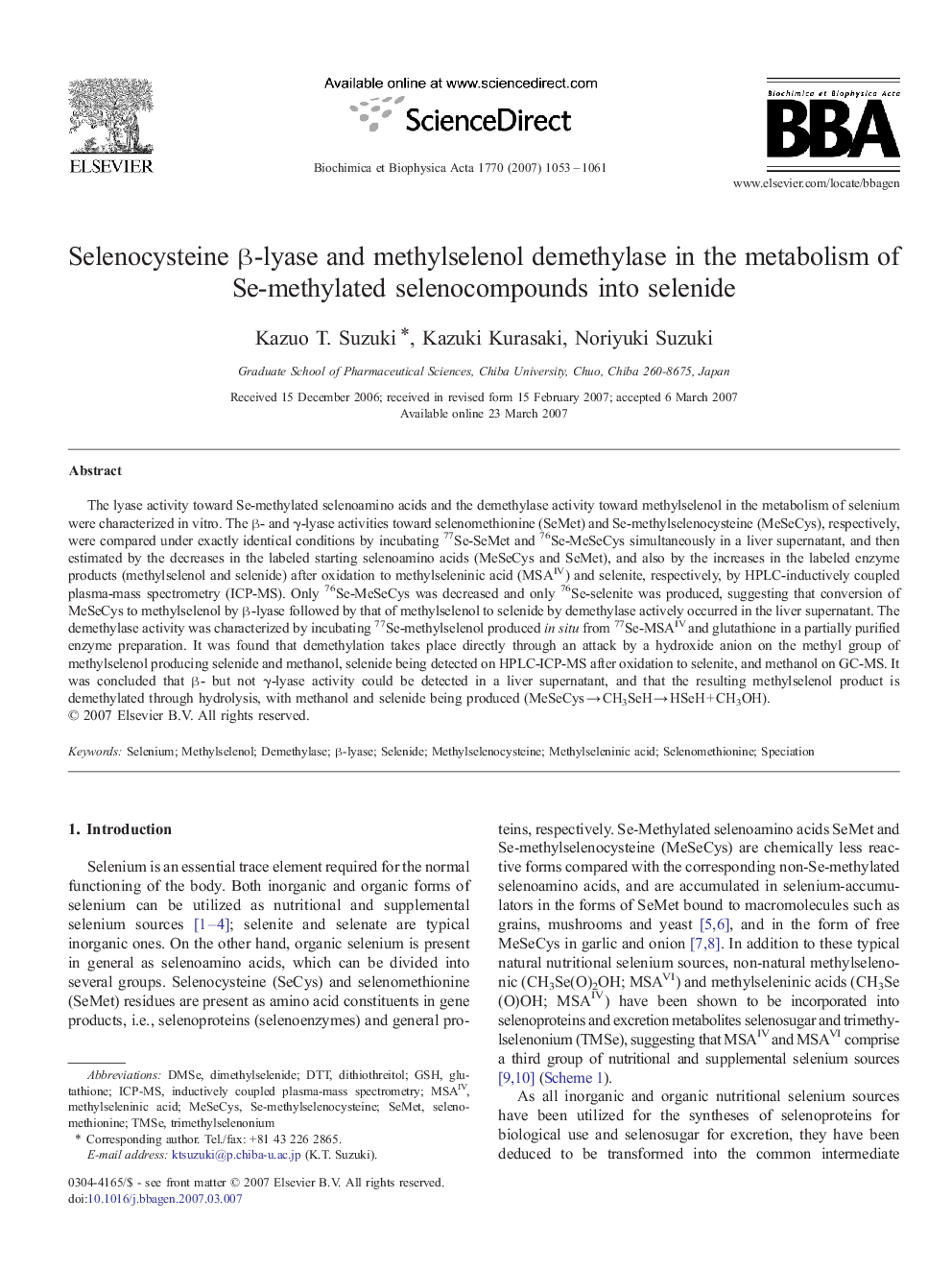| Article ID | Journal | Published Year | Pages | File Type |
|---|---|---|---|---|
| 1948617 | Biochimica et Biophysica Acta (BBA) - General Subjects | 2007 | 9 Pages |
The lyase activity toward Se-methylated selenoamino acids and the demethylase activity toward methylselenol in the metabolism of selenium were characterized in vitro. The β- and γ-lyase activities toward selenomethionine (SeMet) and Se-methylselenocysteine (MeSeCys), respectively, were compared under exactly identical conditions by incubating 77Se-SeMet and 76Se-MeSeCys simultaneously in a liver supernatant, and then estimated by the decreases in the labeled starting selenoamino acids (MeSeCys and SeMet), and also by the increases in the labeled enzyme products (methylselenol and selenide) after oxidation to methylseleninic acid (MSAIV) and selenite, respectively, by HPLC-inductively coupled plasma-mass spectrometry (ICP-MS). Only 76Se-MeSeCys was decreased and only 76Se-selenite was produced, suggesting that conversion of MeSeCys to methylselenol by β-lyase followed by that of methylselenol to selenide by demethylase actively occurred in the liver supernatant. The demethylase activity was characterized by incubating 77Se-methylselenol produced in situ from 77Se-MSAIV and glutathione in a partially purified enzyme preparation. It was found that demethylation takes place directly through an attack by a hydroxide anion on the methyl group of methylselenol producing selenide and methanol, selenide being detected on HPLC-ICP-MS after oxidation to selenite, and methanol on GC-MS. It was concluded that β- but not γ-lyase activity could be detected in a liver supernatant, and that the resulting methylselenol product is demethylated through hydrolysis, with methanol and selenide being produced (MeSeCys → CH3SeH → HSeH + CH3OH).
